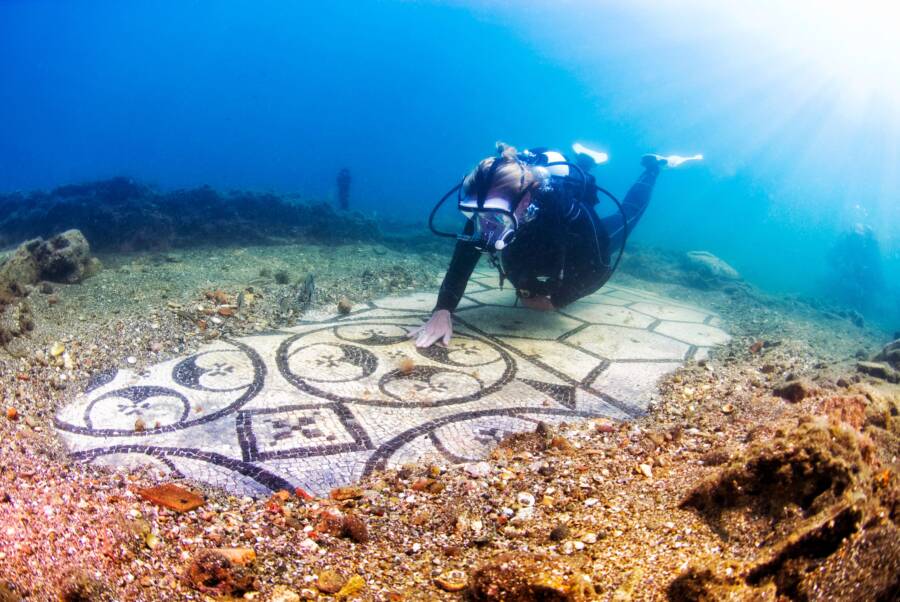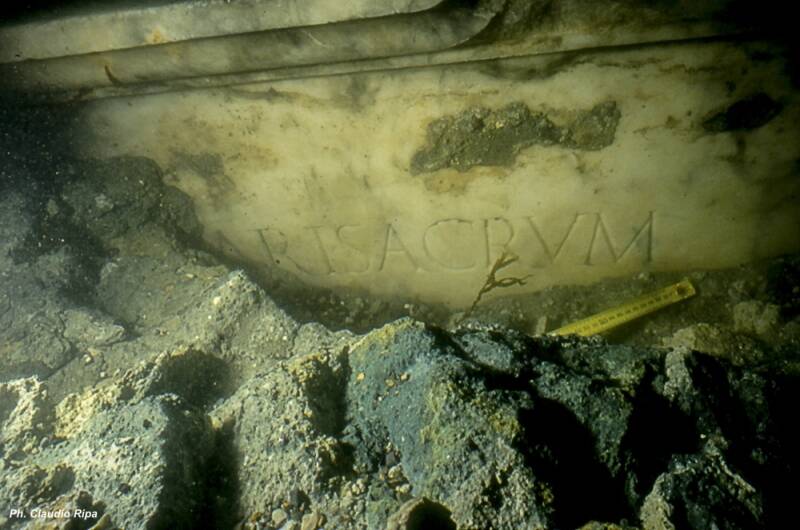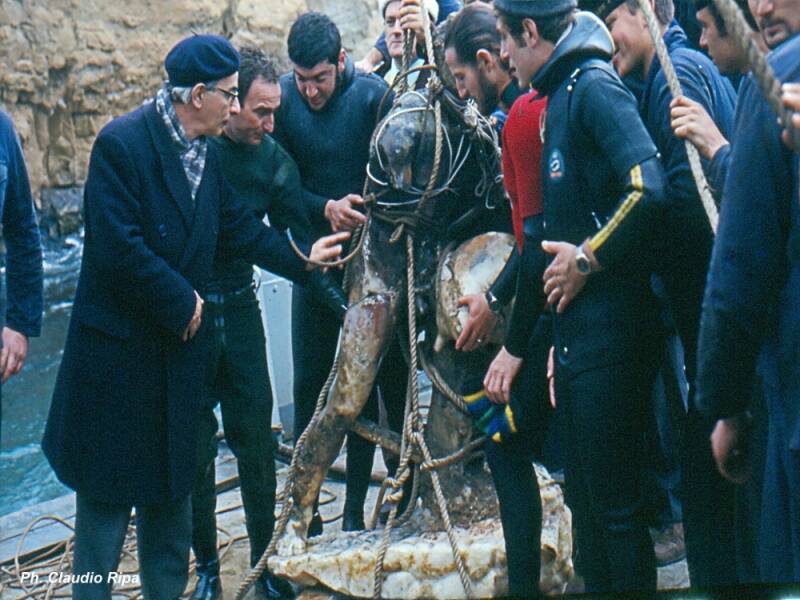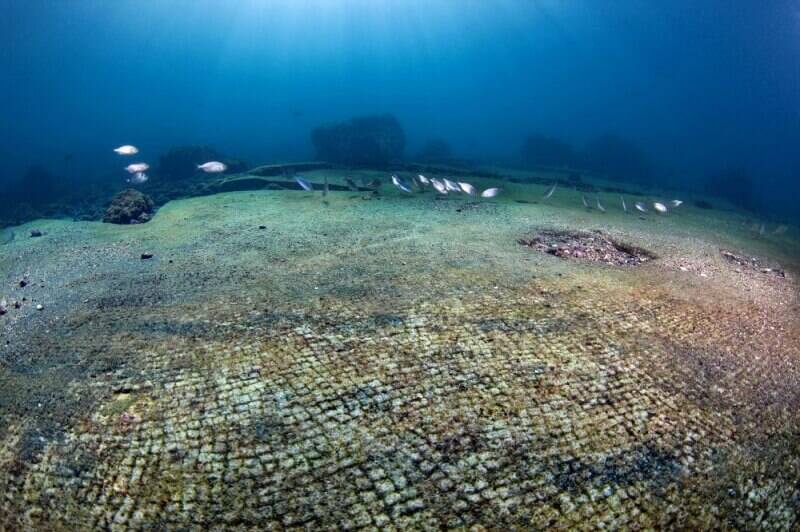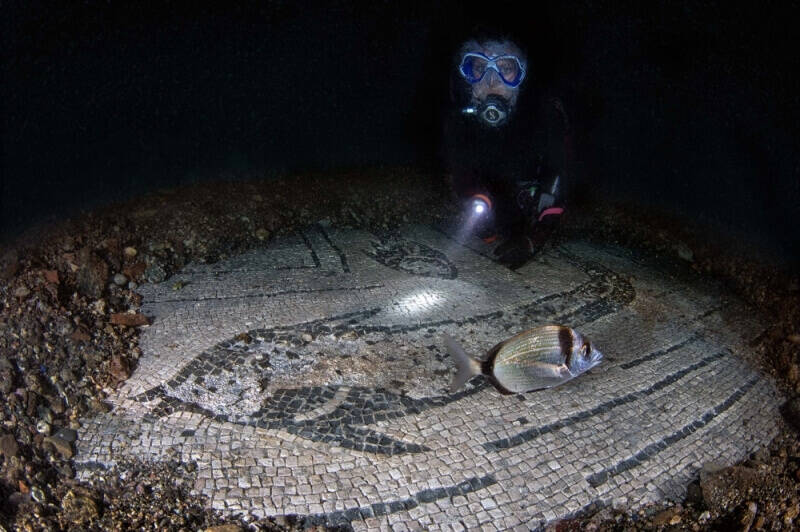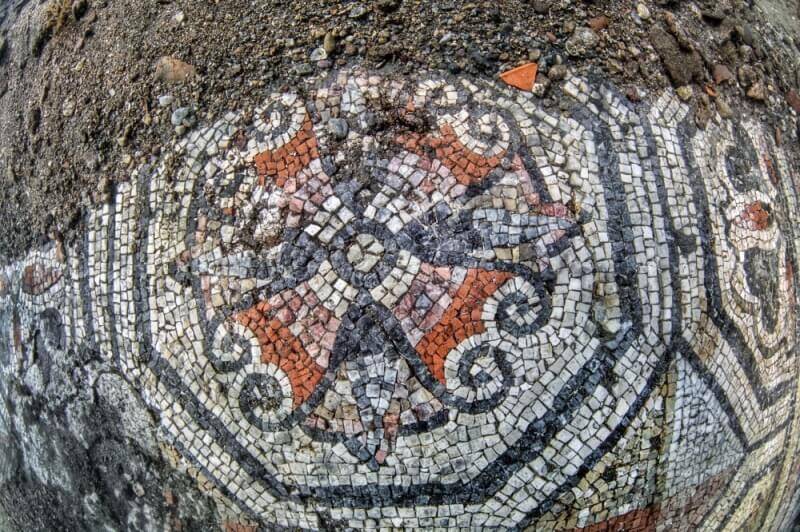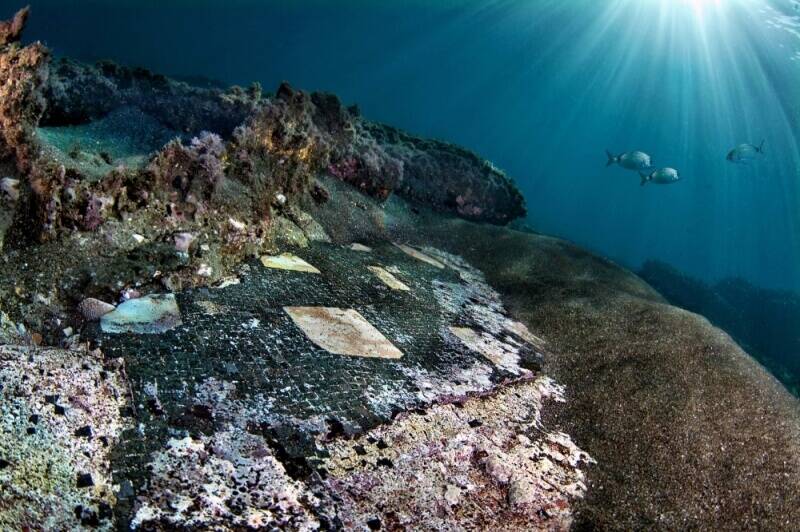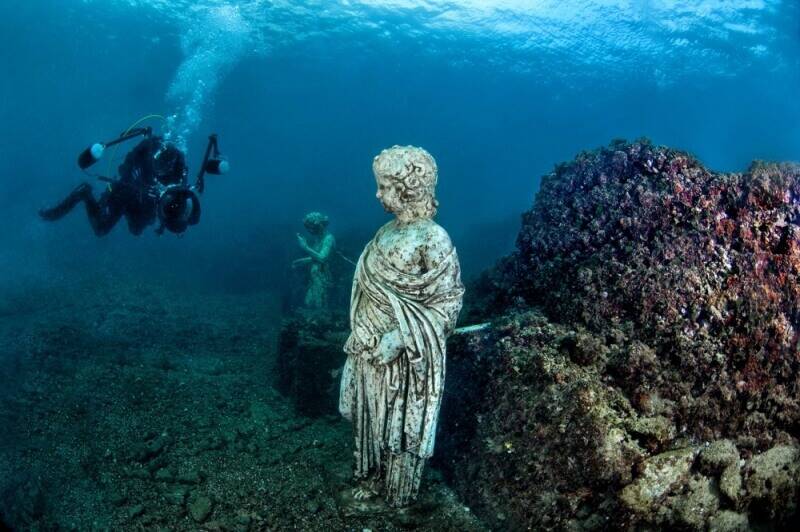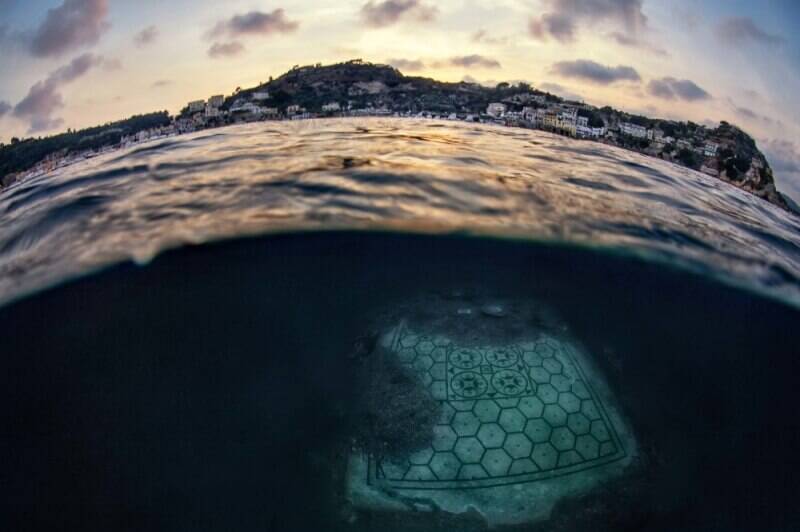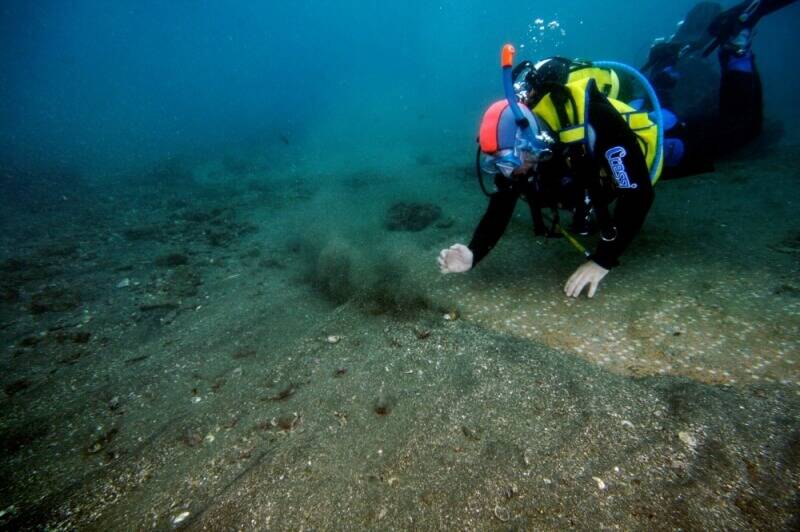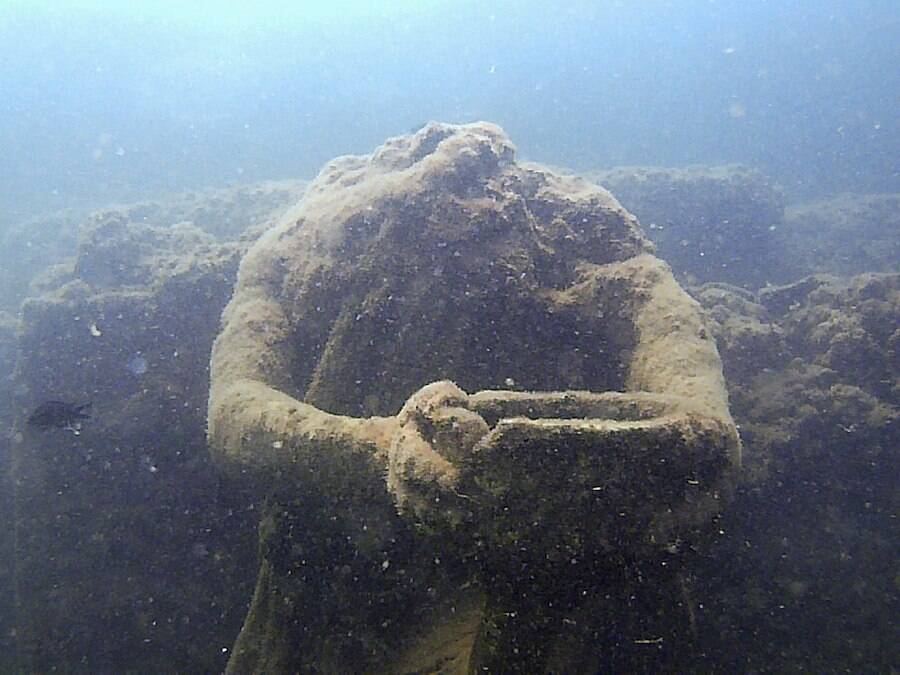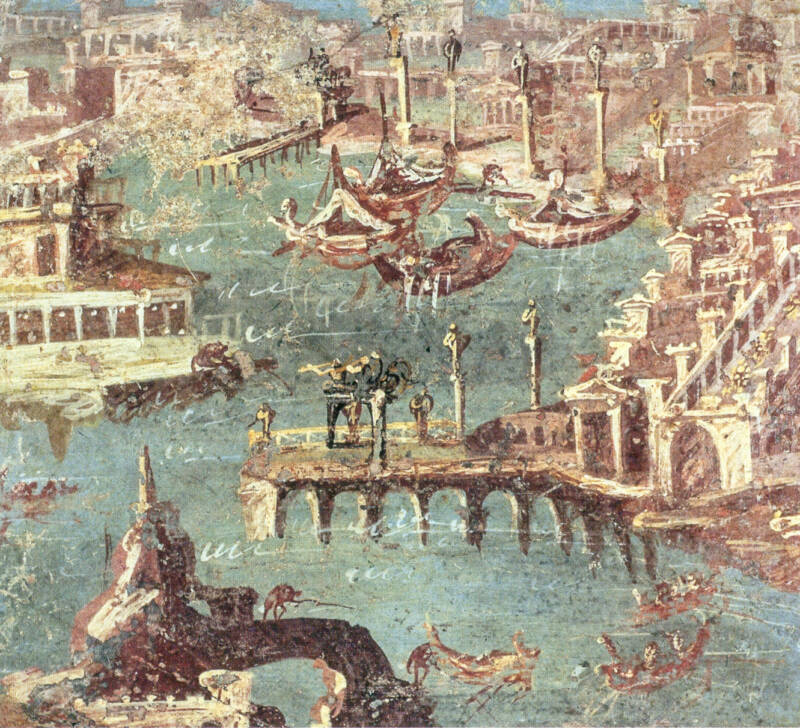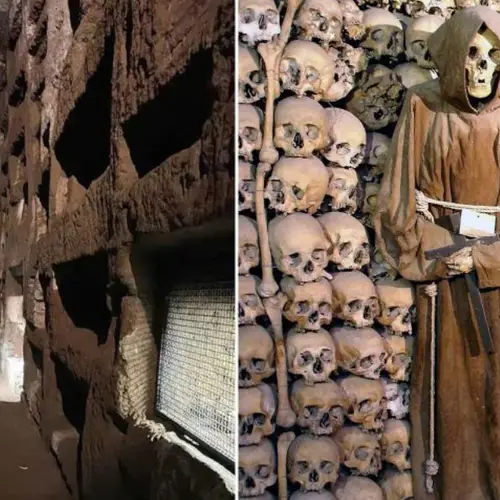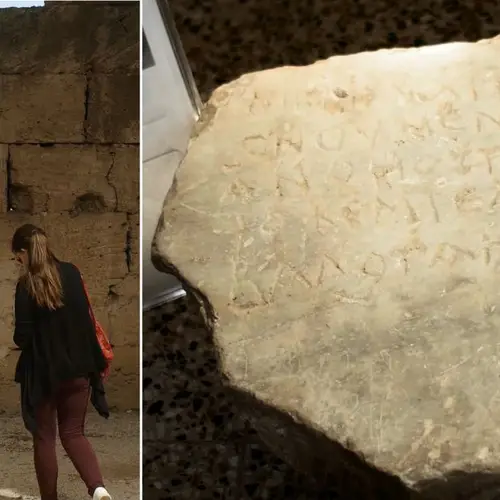Sometimes called the "Las Vegas of the ancient world," the sunken settlement of Baiae was one of its era's most hedonistic resort towns for wealthy Roman elites.
About 150 miles south of Rome, a resort for ancient Roman elites once stood between Mount Vesuvius and the vast Mediterranean Sea. This luxurious place was known as Baiae (sometimes also spelled as Baia).
Centuries ago, the site was the ancient equivalent of the modern-day Las Vegas, a place where secrets, intrigue, and scandal were born.
But today, much of Baiae sits underwater, with a vast collection of ancient Roman mosaics, columns, and other relics submerged in the watery depths.
See some of the most stunning photos of this sunken party town in the photo gallery, then read more about the history of Baiae below.
The Rise Of Ancient Rome's "Sin City"
The exact date of Baiae's construction is still a mystery. But by the 1st century B.C.E., the town had already become a popular destination for ancient Roman elites. Notable figures like Julius Caesar, Augustus, and Nero would all go on to own spectacular homes there.
Though many were attracted to the area's natural hot springs and balmy weather, Baiae also quickly gained a reputation as a place for bad behavior. In 56 B.C.E., a prominent socialite named Clodia was condemned during a court case for living as a "harlot" and seducer in the town.
Other ancient sources paint the resort as the ultimate "harbor of vice" where visitors would truly let themselves go wild.
Accounts of the festivities there included promiscuous sex, drunken revelries, gargantuan feasts, and other forms of debauchery. But even though this place was meant mostly for fun, sometimes politics snuck its way in.
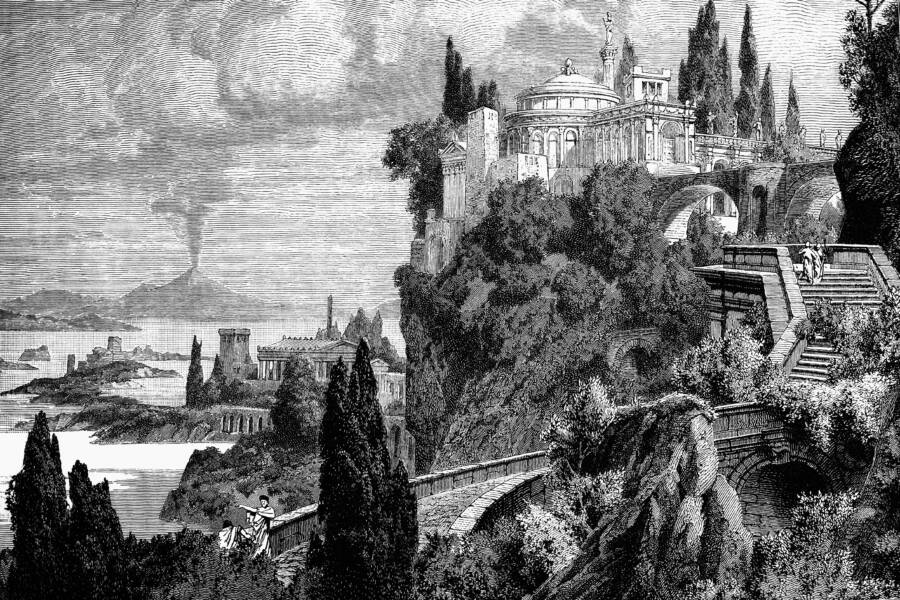
De Luan/Alamy Stock PhotoAn illustration of what Baiae (or Baia) may have looked like in its heyday.
In fact, one story claims that Roman emperor Caligula once went to Baiae just to prove a point to a political critic.
According to Ancient Origins, the astrologer Thrasyllus told Caligula that he had "no more chance of becoming emperor than of riding a horse across the Gulf of Baiae." Enraged by this, Caligula supposedly ordered the construction of a three-mile-long pontoon bridge and crossed it with a horse.
For years, Baiae was the place to be for those wealthy enough to gain entry, but that all changed when the city of sin started sinking into the sea.
The Sinking Of Baiae
By the 4th century C.E., a noticeable portion of Baiae had begun to sink into the Mediterranean Sea. Since the city was not only located near Vesuvius but also a notorious supervolcano called Campi Flegrei, volcanic activity known as bradyseism had caused the level of the Earth to rise and fall over time, and this would eventually push much of the coastal town underwater.
According to the BBC, the remains of Baiae would go on to sink four to 10 meters below the sea (13 feet to 32 feet), and it continues to sink today.
Interestingly enough, some portions of Baiae have remained above ground, and those areas remained relatively well populated until the 8th century C.E., when Muslim raiders sacked the city. The town was later completely abandoned in the 1500s, when a devastating wave of malaria struck the area.
For a long time, it seemed as though the ancient party town would be forgotten, save for mentions in historical texts and imaginative paintings.

Public DomainA depiction of Baiae by 19th-century British artist Samuel Pepys Cockerell.
Occasionally, relics would wash up on the beaches of Baiae in the 1920s, but it wasn't until the 1940s that the sunken resort was rediscovered.
According to The Guardian, Raimondo Baucher, an Italian air force pilot, described seeing a "strange ghost town" while flying low over the waters of what was once Baiae. Intrigued by the sight, he took photos of the pillars, mosaics, and pavements that he could make out from the skies.
"The water was about a metre-and-a-half deep, and because the sky and sea were so clear on that day, he could see that something was underneath," said Enrico Gallochio, an archaeologist who manages the underwater site. "His photos revealed a world which until that moment was unknown — only locals suspected that something was there but they didn't know what."
Ever since this thrilling rediscovery, Baiae has been the subject of several archaeological projects and excavations. And today, tourists can don their wetsuits and take the plunge back in time themselves.
Baiae As A Modern Tourist Destination
Alongside above-ground ancient structures, the underwater world of Baiae attracts tourists every year — who must be accompanied by a guide.
The 437-acre site was officially declared a protected marine area in 2002 to thwart theft. Prior to this date, amateur scuba divers often took independent trips to the sunken city and collected trophies to sell.
"The thefts coincided with the increasing popularity of scuba-diving. Some people took relics away without understanding how precious they were," Enrico Gallochio explained to The Guardian.
Today, the site is better guarded with cameras and a police dive squad.
For those interested in seeing the ruins themselves, the park offers several tours of eight underwater sites, including Emperor Claudio's Nymphaeum, an ancient spa complex, and the columns of a large garden.
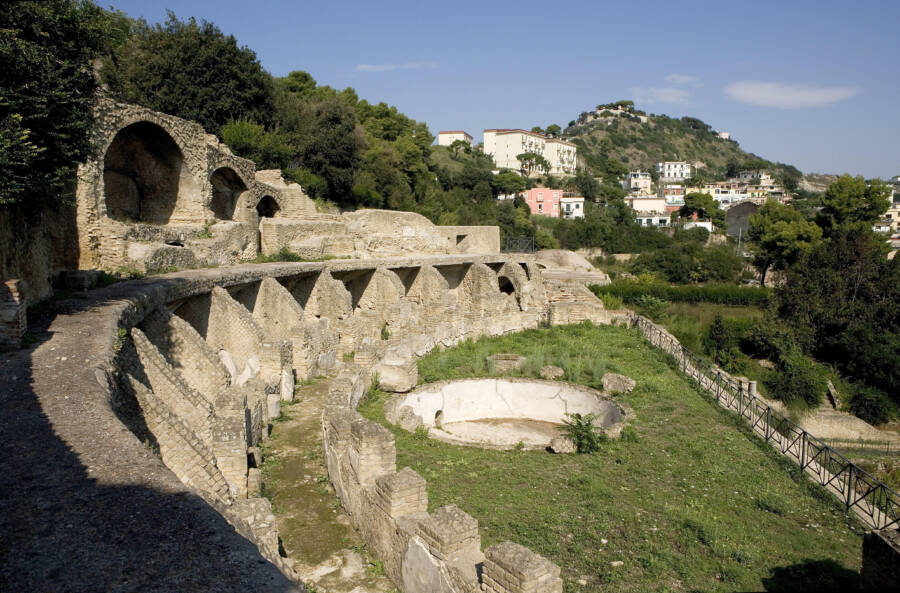
mauritius images GmbH/Alamy Stock PhotoAn above-ground archaeological site in Baiae.
The tours can take the form of scuba diving or snorkeling, with glass-bottom boat rides possibly being added in the future as well.
While tourists enjoy a trip back in time, archaeologists at the park hope to make more discoveries to help piece together the reality of ancient life in Baiae. (Recently, a 2,000-year-old "psychedelic" mosaic was recovered at the site.) Was this town really as crazy as some sources made it sound?
"We have traces of these huge luxurious rooms which must have hosted continuous parties," Gallochio confirmed to The Guardian. "You can imagine that, during the summer holidays, this was a place of self-indulgence, where Roman nobility could go crazy."
Gallochio and the rest of his team look forward to the idea of piecing together the story of Baiae. "It's always emotional to find something, even if it's a small piece of marble," he said.
After reading about Baiae, discover 33 ancient Rome facts that will change the way you see history. Then, explore the House of the Vettii, an opulent Roman villa destroyed by the eruption of Mount Vesuvius in 79 C.E.

